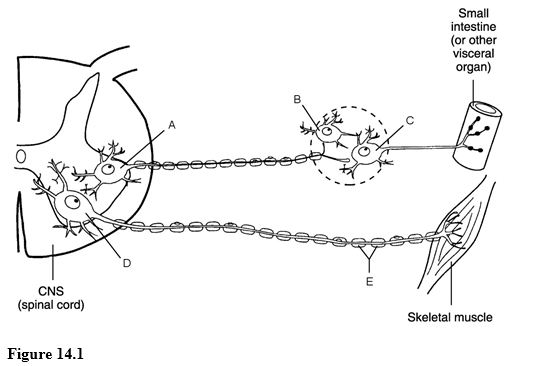Describe the lumbar plexus and sacral plexus
A) The lumbar plexus is a nerve network formed by axons from the anterior rami of spinal nerve segments C1-C5; the sacral plexus is a nerve network formed by axons from the anterior rami of spinal nerve segments C5-T1.
B) The lumbar plexus is a nerve network formed by axons from the anterior rami of spinal nerve segments T12-L4; the sacral plexus is a nerve network formed by axons from the anterior rami of spinal nerve segments S4-Co1.
C) The lumbar plexus is a nerve network formed by axons from the anterior rami of spinal nerve segments C1-C5; the sacral plexus is a nerve network formed by axons from the anterior rami of spinal nerve segments S4-Co1.
D) The lumbar plexus is a nerve network formed by axons from the anterior rami of spinal nerve segments L1-L5; the sacral plexus is a nerve network formed by axons from the anterior rami of spinal nerve segments L4-S5.
E) The lumbar plexus is a nerve network formed by axons from the anterior rami of spinal nerve segments T12-L4; the sacral plexus is a nerve network formed by axons from the anterior rami of spinal nerve segments L4-S4.
Answer: E
You might also like to view...
Most of the surface area of a plasma membrane consists of
A) a protein bilayer. B) a phospholipid bilayer. C) carbohydrate molecules. D) DNA. E) cells.
Moving a part of the body toward the midline of the body is called:
a. adduction b. abduction c. rotation d. pronation
Using Figure 14.1, match the following:

1) Myelin sheath.
2) Cell body of ANS preganglionic neuron.
3) Cell body of ANS postganglionic neuron.
4) Cell body of the somatic neuron.
Which of the following exhibits autorhythmicity?
A. Cardiac muscle fibers B. Actin fibers C. Visceral smooth muscle fibers D. Intermediate fibers E. Both cardiac muscle fibers and visceral smooth muscle fibers